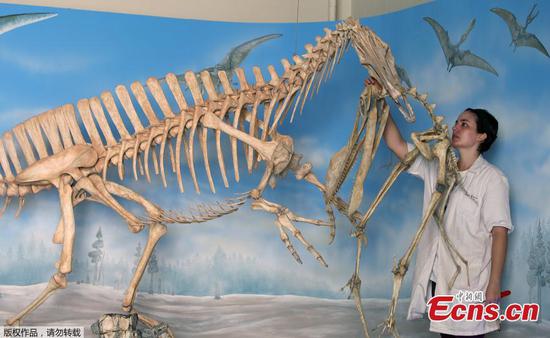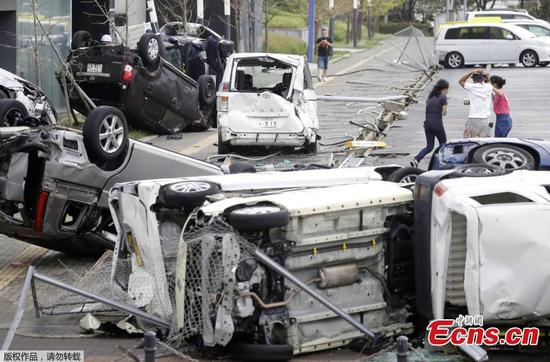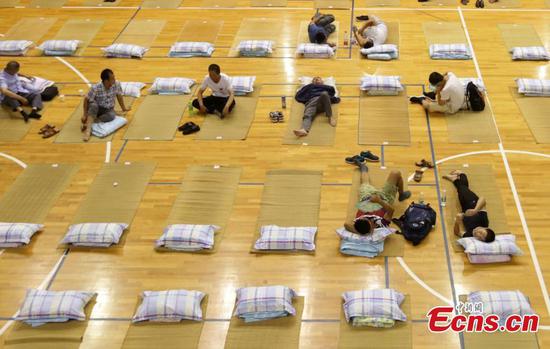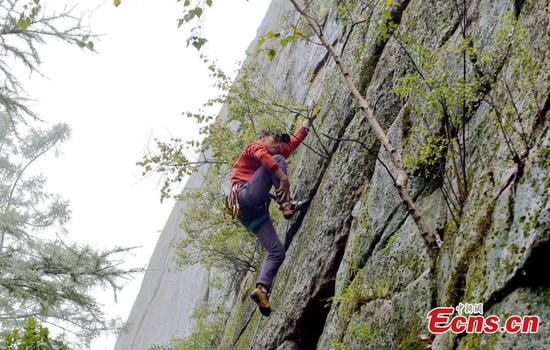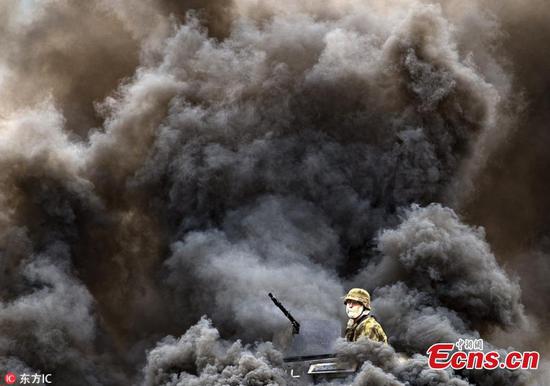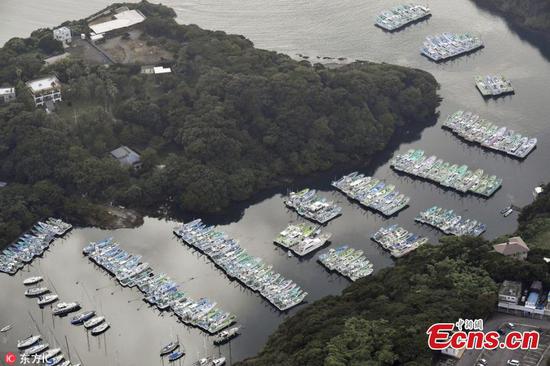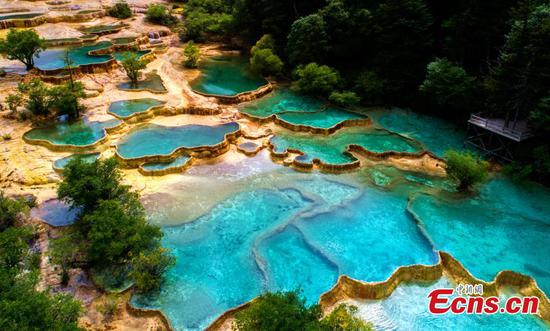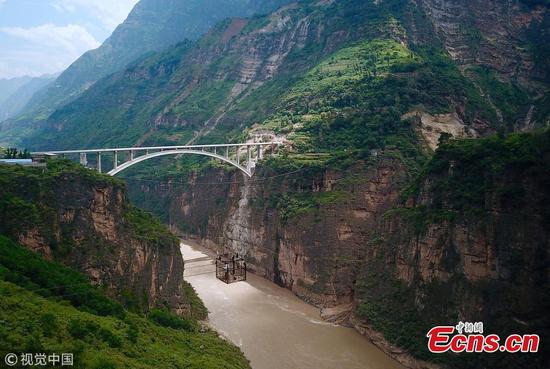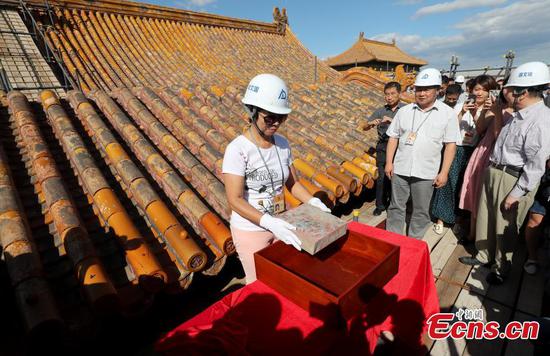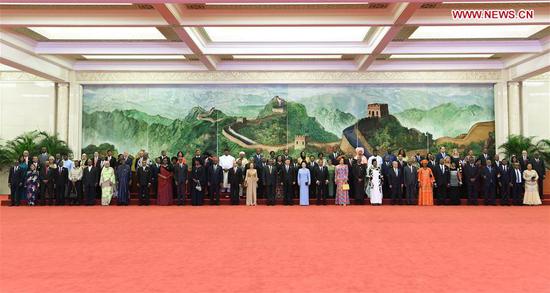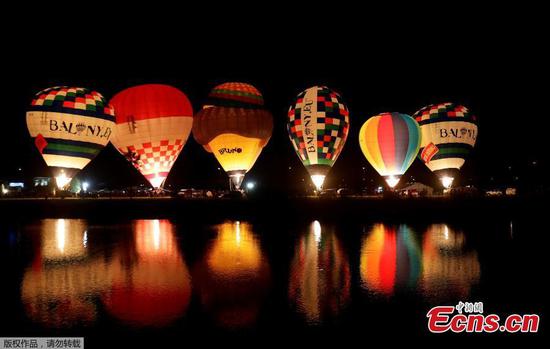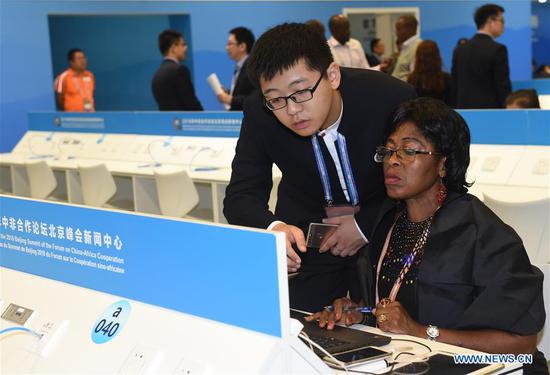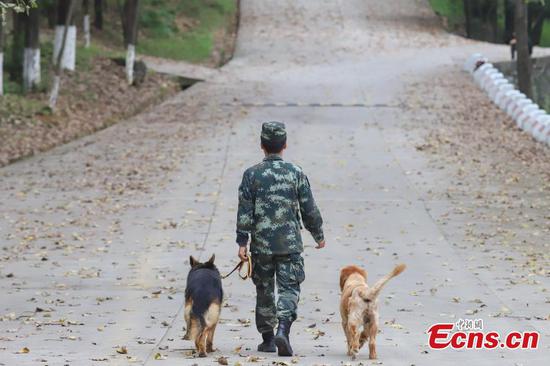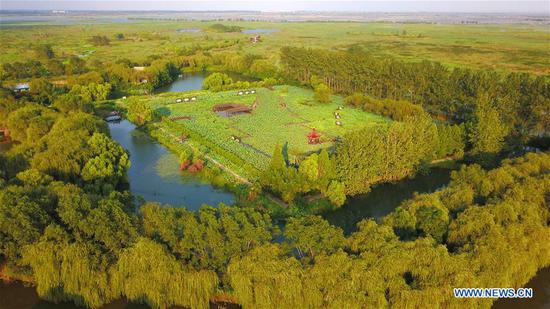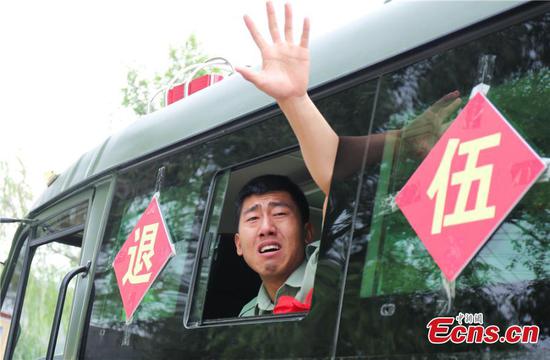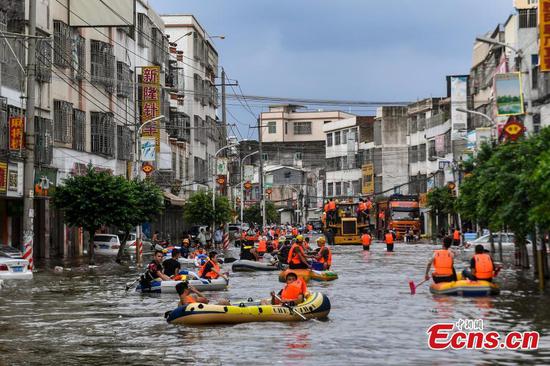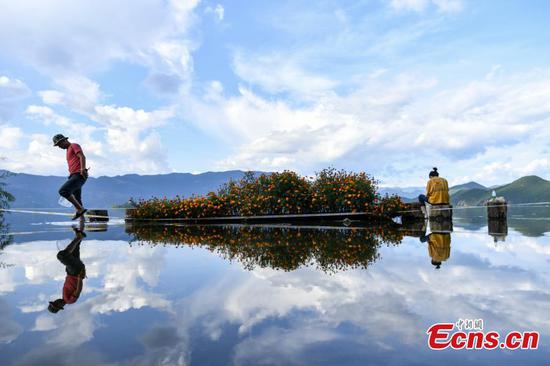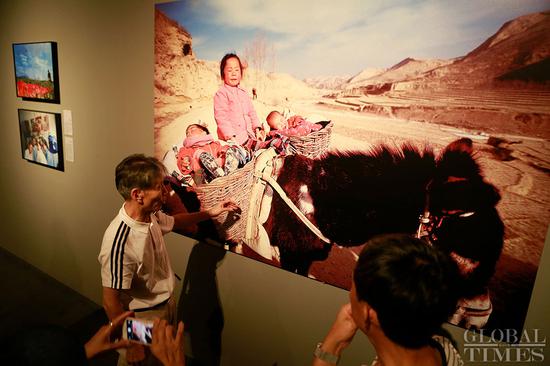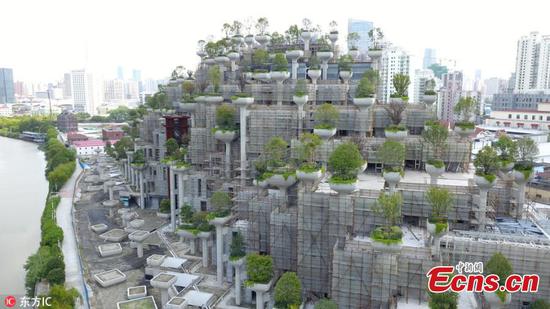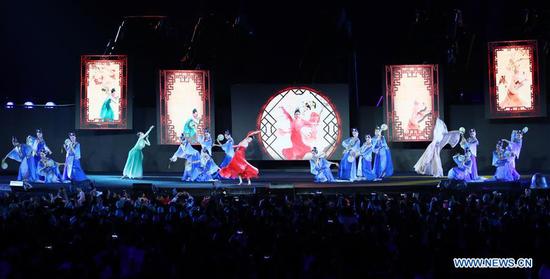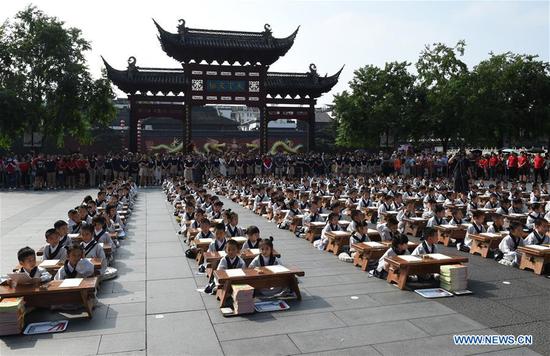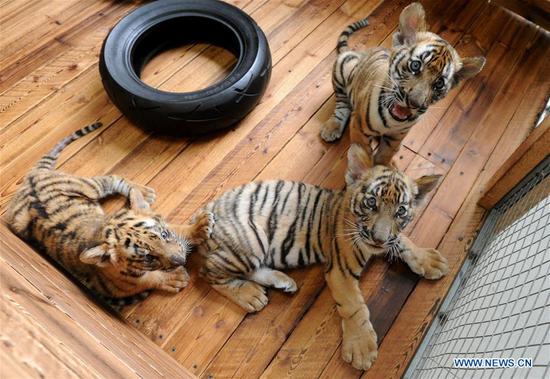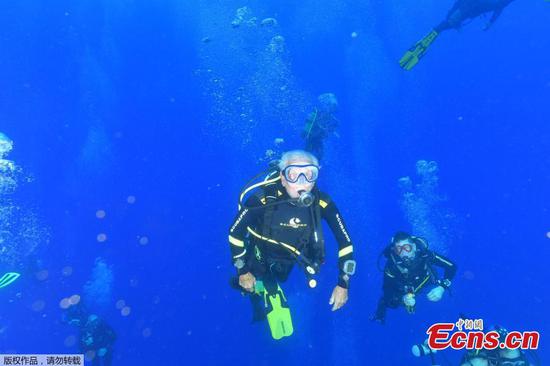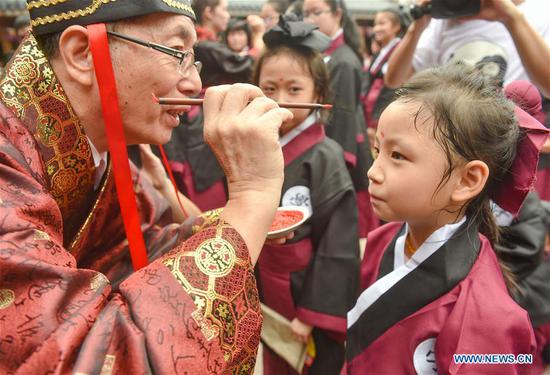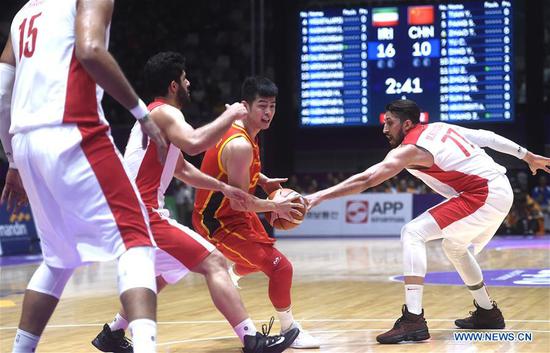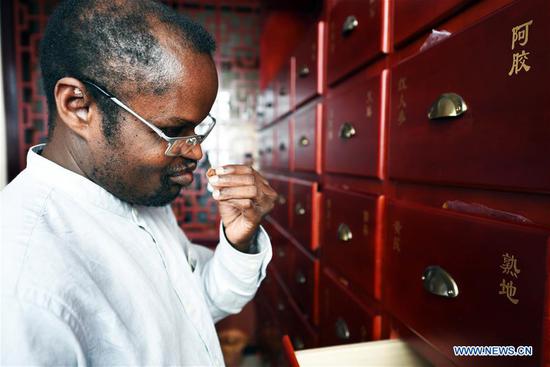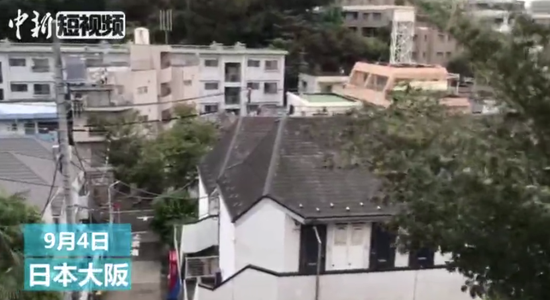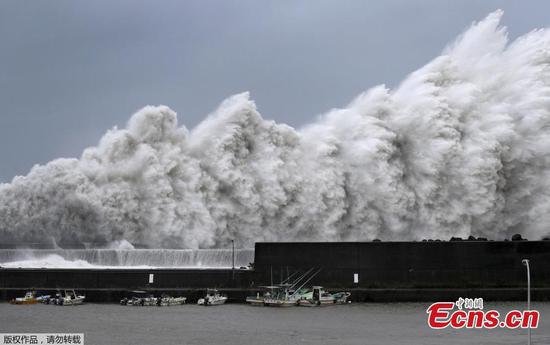
High waves triggered by Typhoon Jebi are seen at a fishing port in Aki, Kochi Prefecture, western Japan, in this photo taken by Kyodo September 4, 2018.(Photo/Agencies)
Typhoon Jebi, the most powerful typhoon to make landfall in Japan in 25 years, struck western Japan on Tuesday and went on to wreak havoc on cars, buildings, infrastructure and transportation systems, leaving at least seven people dead and injuring more than 200 others.
The Japan Meteorological Agency (JMA) said that after making landfall in the southern part of Tokushima Prefecture, the typhoon passed near Kobe and moved into the Sea of Japan.
Numerous flights, train services and highways were closed in the Kinki region and beyond, and shops, factories and other facilities, particularly in western Japan were closed, including the popular Universal Studios attraction in Osaka prefecture.
Regarding the typhoon-related fatalities, in Shiga prefecture a man died inside a warehouse after the building collapsed and a man in Osaka prefecture fell from the second floor of a house, reportedly because of the strong winds, local police said.
Also in Osaka, an elderly man fell from the upper floor of a housing complex and was confirmed dead and three others died after being struck by objects flung by the powerful gusts of the typhoon, local officials said.
The majority of those injured were in western and central Japan. At Kyoto Station a number of people were injured when a piece from a glass ceiling collapsed due to the powerful winds, according to local police reports.
Strong gusts could be felt in areas far from the typhoon, with four people injured after being hit by a roof falling in Hachioji, western Tokyo.
The powerful typhoon forced Kansai International Airport in western Japan to halt its operations at midday as high waves caused by the typhoon saw the airport become inundated with water.
The airport's operator said large areas of the airport have been submerged, including runways, parking spaces and passages to buildings in the basement of the facility.
Winds of up to 209 km per hour were logged at the airport on Tuesday afternoon and 3,000 people were stranded due to the floods there, local authorities said.
According to the Japan Coast Guard, powerful gusts of winds blew a tanker into a bridge that connects the airport with Izumisano City.
Both the bridge and tanker were damaged in the incident.
The vessel, used to carry fuel to the airport, was moored at the time of the accident. The tanker had finished carrying fuel to the airport, but the winds were powerful enough to break its moorings and smash the vessel into the bridge.
The coast guard said, however, that none of the 11 stranded crew members aboard the tanker were injured.
The coast guard added that dozens of other ships have been swept away in Osaka port by the powerful winds, although there have been no reports of injury to crew members as a result.
A number of high-sided trucks in western Japan were tipped over on a highway by the powerful winds, local police said, with one truck almost completely blown off a bridge connecting Shikoku island and the main island of Honshu, local media reported.
Power outages affected around 1.61 million households in the Kansai region and 95,000 in Shikoku. The blackouts were caused by the torrential rain, local utilities said.
A number of historical and cultural assets and artifacts were damaged as a result of the powerful winds, with temples in Kyoto, Nara and Shiga all suffering damage, according to local media reports.
Typhoon Jebi was traveling at a speed of 75 km per hour over the sea off Sado Island, and packing winds of up to 180 kph with an atmospheric pressure of 970 hectopascals at its center, JMA said as of 8:00 p.m. local time (1100 GMT).
Due to the effect of the westerly jet stream, Jebi is picking up speed, the weather agency said. The typhoon is forecast to hit west Hokkaido, although other northerly regions are bracing for impact, with Aomori Prefecture setting up evacuation centers at six different locations, according to local media reports.
Japanese Prime Minister Shinzo Abe was due to visit southwestern prefectures on Tuesday, but his plans were canceled due to the severity of the typhoon.
The prime minister, in a disaster response meeting, pledged to remain alert in dealing with the impact of the typhoon. Abe urged members of the public to listen for evacuation orders, warnings and advisories and if necessary evacuate as early as possible.
Japan has been battered by a number of typhoons recently, with western regions being particularly hard hit with 220 people killed in July alone.
The powerful typhoon on Tuesday has heavily disrupted transportation services, causing flights and rail services to be canceled, as well as some commercial facilities' operations.
More than 700 local and international flights have been canceled by domestic airlines, and among Japan's top two carriers, All Nippon Airways Co. and Japan Airlines Co. have canceled more than 500 flights between them.
The Tokaido Shinkansen and Sanyo Shinkansen bullet train lines had some services suspended by railway operators and parts of major highways have also been closed, the transport ministry said.
Some stores in Osaka and Kyoto prefectures as well as in other parts of western Japan have shut down operations for the day and Toyota Motor Corp. said it will halt its nighttime operations at 14 factories across the country, particularly those in western and northern areas.
According to the JMA, up to 500 mm of rain is forecast to fall in central Japan and up to 400 mm in western Japan in the 24-hour period through 6:00 a.m. local time on Wednesday (2100 GMT Tuesday).
At an emergency press briefing on Monday, an official from the JMA was quoted as saying that the typhoon has been categorized as "very strong" by the agency and based on the strength of its top winds, would be the strongest typhoon to make landfall in Japan since 1993.
By Wednesday, Typhoon Jebi should be downgraded to an extra-tropical cyclone, the JMA said.









